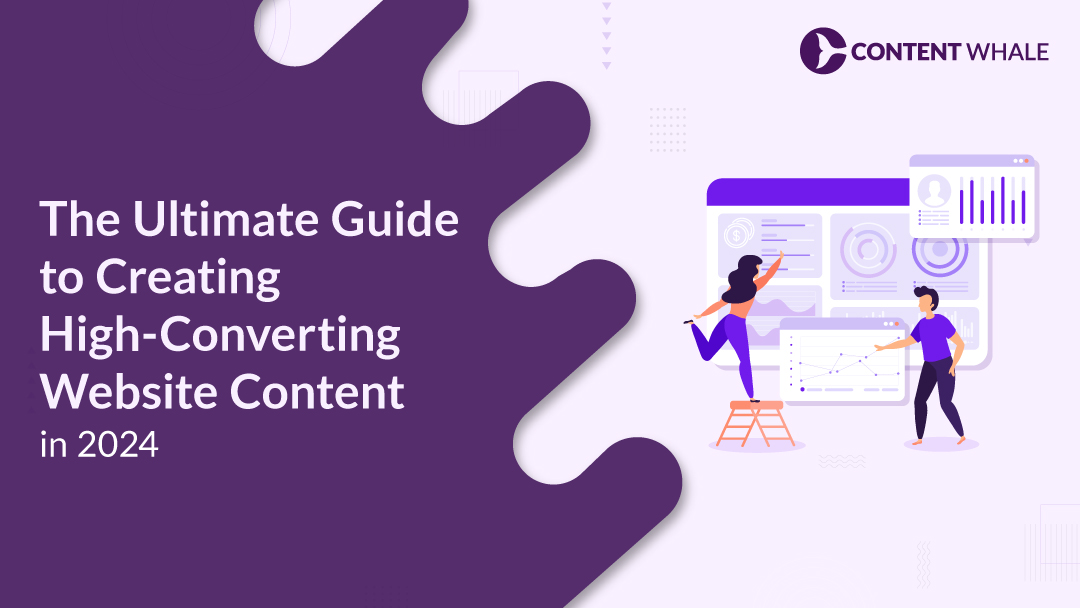A strong content strategy is essential for any business aiming to succeed in the digital marketing space. By establishing a well-defined content strategy, you can effectively engage your target audience, build brand awareness, and drive conversions.
In this guide, we’ll walk you through the five essential steps to create a successful content strategy, from setting clear goals to promoting your content.
Whether you’re just starting or looking to refine your approach, these steps will provide you with actionable insights to boost your online content efforts.
Step-by-Step Guide to Creating a Winning Content Strategy
Step #1: Define Your Goals and Objectives
Every successful content strategy starts with clear goals and objectives. Knowing what you want to achieve with your content is crucial for guiding your efforts in the right direction.
Some common content goals include:
- Increasing brand awareness
- Driving website traffic
- Generating leads
- Boosting customer engagement
It’s important to align these goals with your overall business objectives. This ensures that your content marketing efforts are not just random acts of creation but are purposefully contributing to your broader marketing planning. By setting measurable and attainable goals, you lay the groundwork for a content strategy that is both effective and sustainable.
Step #2: Know Your Audience

Knowing your audience is crucial for crafting a content strategy that truly connects. To make sure your content resonates, you need a deep understanding of who your audience is and what they care about.
a. Conduct Audience Research
Start by gathering data on your audience’s demographics, behaviors, and preferences. Tools like Google Analytics and social media insights are great for this.
b. Create Buyer Personas
Develop detailed buyer personas that represent your ideal customers. Include factors like:
- Age
- Job role
- Challenges
- Goals
c. Understand Audience Needs
Tailoring your content to meet your audience’s needs and preferences is key. This level of personalization increases engagement and ensures your content marketing is more effective.
Step #3: Plan Your Content
Planning is a critical step in developing a successful content strategy. A well-thought-out content plan ensures that your online content is not only consistent but also aligned with your overall digital marketing goals.
a. Develop a Content Calendar
Creating a content calendar helps you organize your content creation process. It allows you to schedule posts, plan ahead for key events, and ensure a steady flow of content. A content calendar also makes it easier to maintain consistency, which is essential for building audience trust and engagement.
b. Choose Content Types and Formats
Different types of content resonate differently with your audience. Consider a mix of blog posts, videos, infographics, and social media updates. This variety caters to different audience preferences and keeps your content strategy dynamic. When planning content, think about how each piece fits into your overall content marketing and strategic planning.
c. Schedule Consistent Publishing
Consistency is key to keeping your audience engaged. Scheduling your content ensures that your audience knows when to expect new content, which helps in building a loyal following. Regular publishing also signals to search engines that your website is active, aiding in your SEO efforts.
Step #4: Create and Optimize Content

Creating and optimizing content is where your strategy comes to life. The quality of your content directly impacts its effectiveness in achieving your content goals and driving your digital marketing efforts.
a. Write High-Quality, Engaging Content
Focus on producing content that is not only informative but also engaging. High-quality content keeps your audience interested and encourages them to take action. Whether it’s blog posts, videos, or social media updates, your content should provide value and address your audience’s needs.
b. Use SEO Best Practices
Optimizing your content for search engines is essential for visibility. Incorporate primary and secondary keywords like “content strategy,” “digital marketing,” and “online content” naturally throughout your content. Make sure to use meta titles, meta descriptions, and proper headings to enhance your SEO. Also, include internal and external links to boost your content’s credibility.
c. Optimize for Various Platforms
Ensure your content is optimized for different platforms. Whether it’s your website, social media, or email marketing, each platform may require slight adjustments to the content format and style. This approach maximizes the reach and impact of your content distribution strategy.
Step #5: Distribute and Promote Your Content
Once your content is created and optimized, the next step in your content strategy is distribution and promotion. Effectively distributing and promoting your content ensures that it reaches your target audience and supports your overall digital marketing goals.
a. Select the Right Distribution Channels
Choosing the right platforms to share your content is crucial. Whether it’s social media, your website, or email marketing, each channel plays a unique role in reaching your audience. Make sure to tailor your content distribution strategy to the channels where your audience is most active.
b. Promote Content on Social Media
Social media is a powerful tool for content promotion. Share your content across platforms like Facebook, Twitter, LinkedIn, and Instagram to increase visibility and engagement. Use relevant hashtags and engage with your audience to amplify your content’s reach.
c. Leverage Email Marketing and Paid Ads
Email marketing is a direct way to reach your audience with your latest content. Regular newsletters can keep your subscribers informed and engaged. Additionally, consider using paid ads to boost the visibility of key content pieces, ensuring they reach a wider audience and support your marketing planning.
By effectively distributing and promoting your content, you ensure that your strategic planning efforts pay off, driving traffic, engagement, and conversions.
Conclusion

Building a successful content strategy is a process that involves careful planning, audience understanding, and consistent execution. By following the five steps outlined—defining your goals, knowing your audience, planning your content, creating and optimizing content, and distributing and promoting it—you set the foundation for a content strategy that drives results.
Remember, the key to effective content marketing lies in consistency and continuous analysis. Regularly review your content’s performance and adjust your strategy as needed to ensure you are meeting your content goals and supporting your broader digital marketing objectives.
If you’re looking to elevate your content strategy, consider expert help from Content Whale. Our professional content writing services are designed to create engaging, SEO-optimized content that resonates with your audience and drives your digital marketing success.
FAQs
1. What is a content strategy and why is it important?
A content strategy is a comprehensive plan that guides the creation, distribution, and management of online content. It’s important because it helps businesses align their content with their digital marketing goals, ensuring that every piece of content serves a purpose, whether that’s increasing brand awareness, driving traffic, or generating leads. A well-crafted content strategy also ensures consistency and helps in effectively reaching and engaging your target audience.
2. How do I define my content goals and objectives?
Defining content goals and objectives starts with understanding what you want to achieve through your content marketing efforts. Common goals include boosting brand awareness, driving traffic to your website, improving audience engagement, and generating leads. These goals should align with your overall business objectives and be specific, measurable, achievable, relevant, and time-bound (SMART). By setting clear goals, you can tailor your content strategy to meet these objectives effectively.
3. What tools can help me understand my audience better?
Several tools can assist in understanding your audience better, which is crucial for effective content strategy development. Google Analytics provides insights into audience demographics and behavior, while social media platforms like Facebook and Instagram offer detailed audience insights. Additionally, tools like HubSpot and SEMrush can help you analyze audience needs, preferences, and online behavior, enabling you to create more targeted and personalized content.
4. How often should I update my content calendar?
Your content calendar should be updated regularly to reflect changes in your content strategy, marketing planning, and any upcoming events or trends. Many businesses find it effective to review and update their content calendar monthly or quarterly. This ensures that your content remains relevant, timely, and aligned with your overall digital marketing goals.
5. What are the best practices for distributing and promoting content?
The best practices for content distribution and promotion include selecting the right channels to reach your audience, such as social media, email marketing, and your website. Additionally, promoting content on social media platforms with engaging posts and relevant hashtags can significantly increase its visibility. Leveraging email marketing by sending newsletters to your subscribers is another effective method. Paid advertising can also boost content reach and engagement, especially for key pieces that align with your strategic planning.





